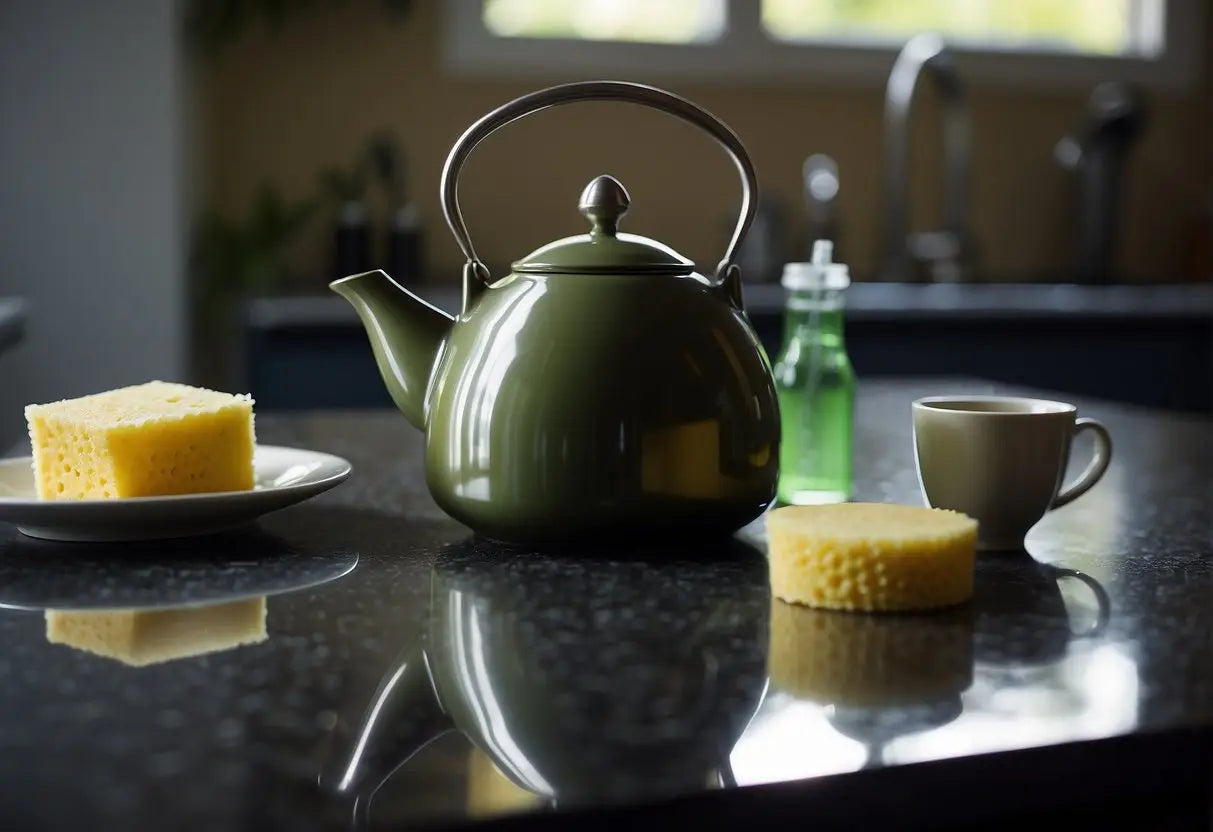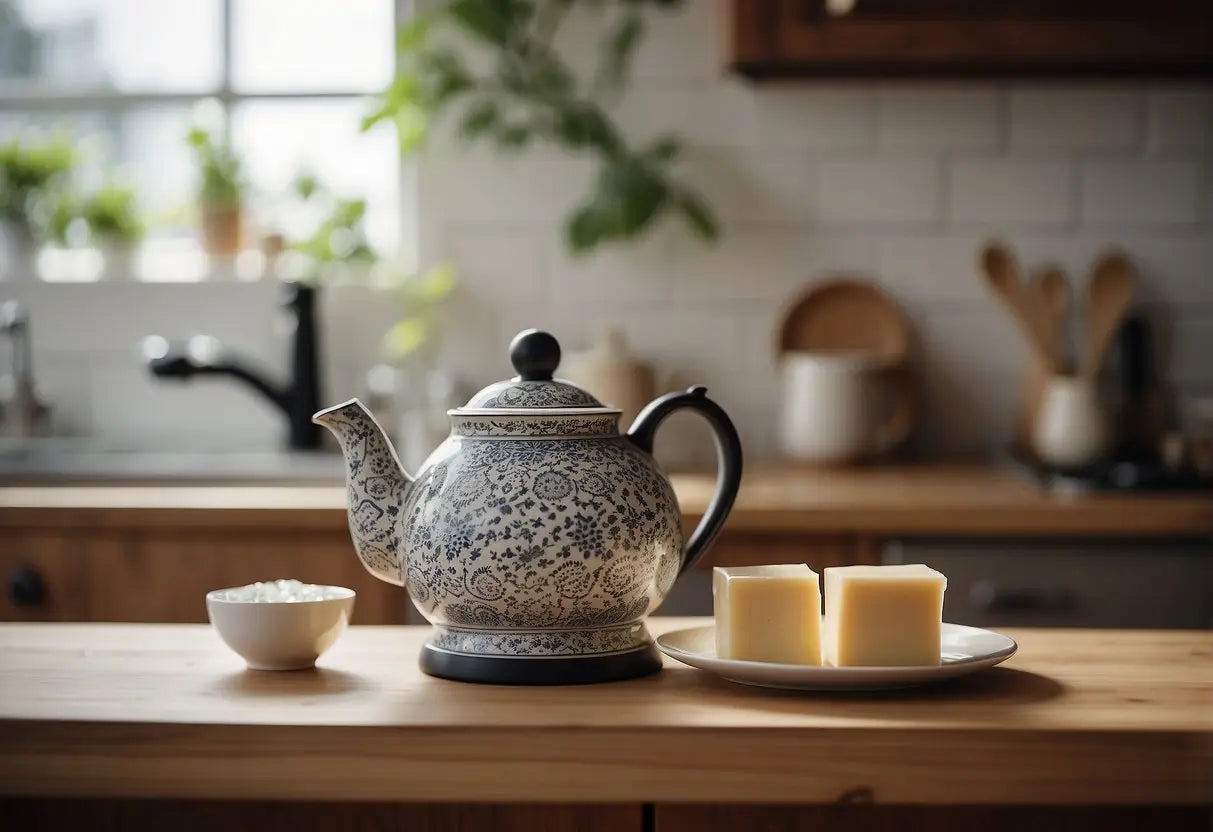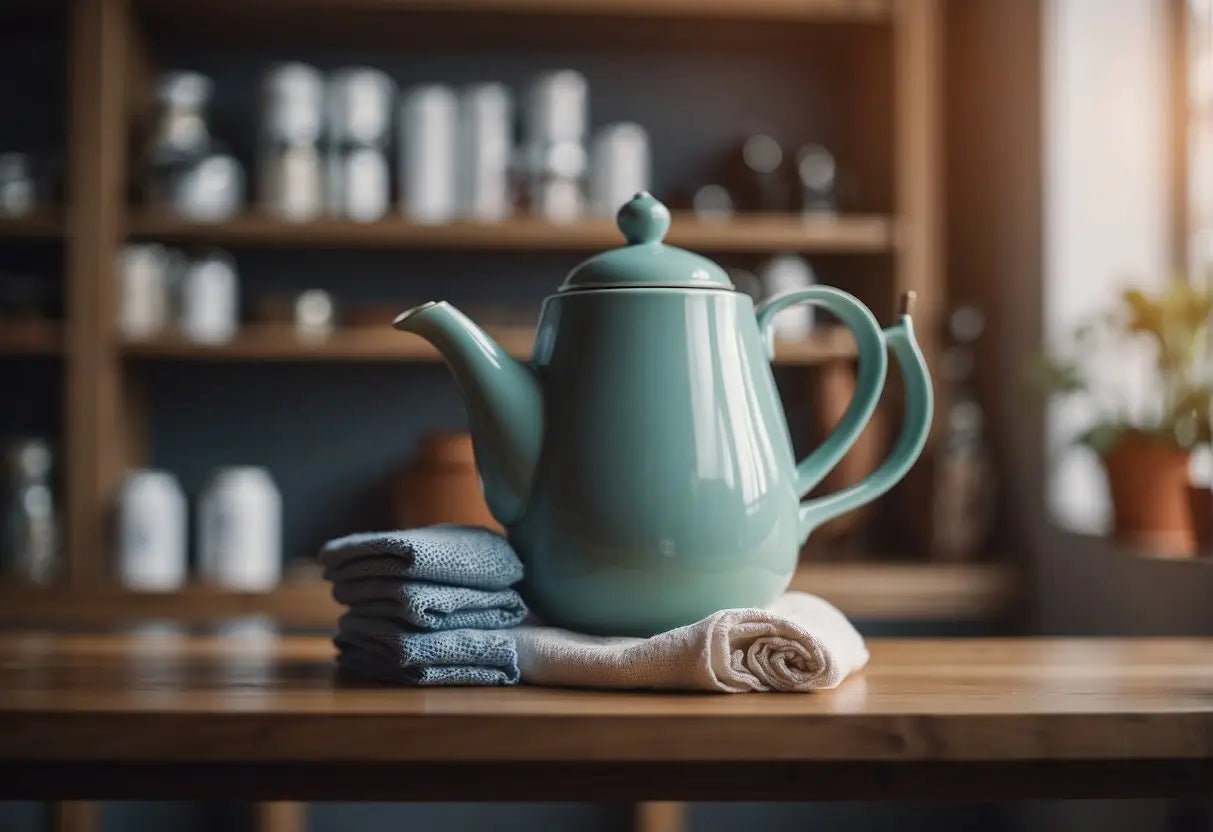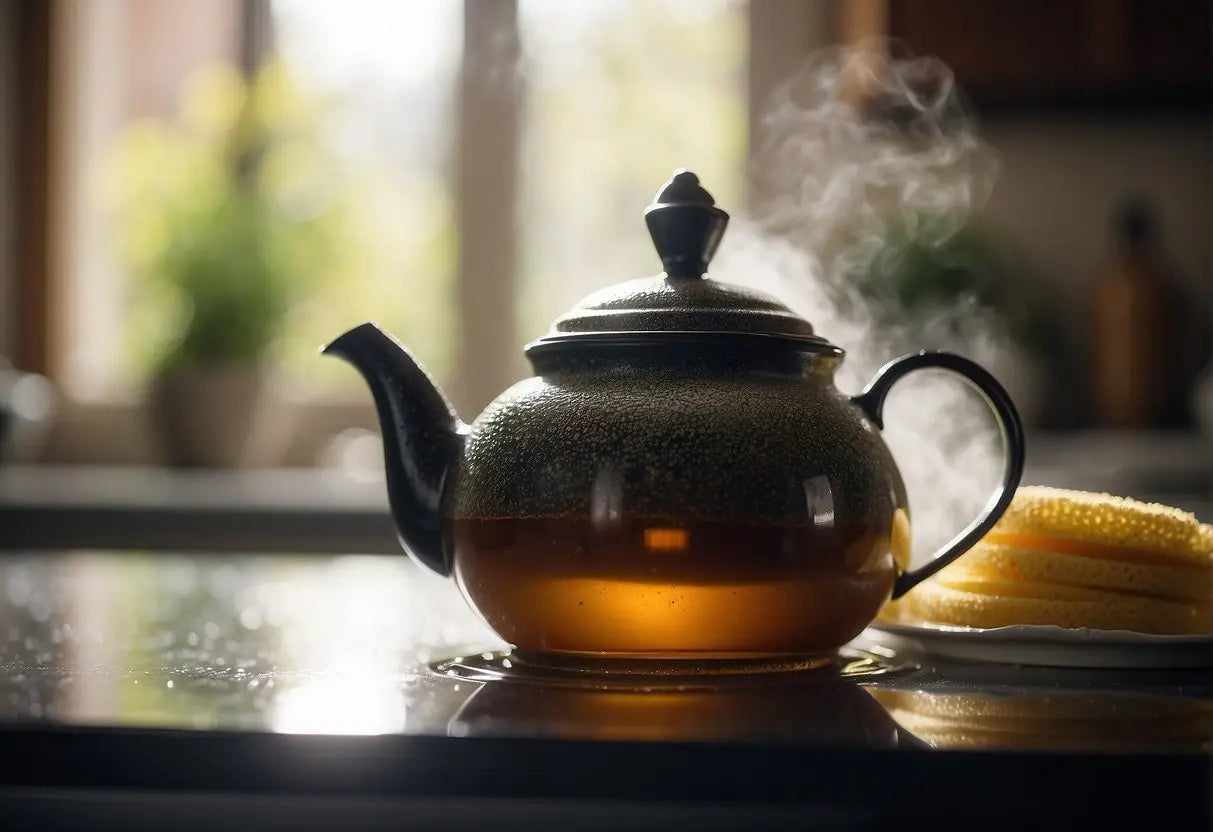How to Clean a Teapot
Shop our Pu Erh Tea collections!
Before cleaning your tea pot, it's important to familiarize yourself with its material composition and construction, as these factors will determine the appropriate cleaning method. Different materials such as ceramic, glass, metal, or cast iron require unique care.
Ceramic Tea Pots:
Bestsellers
- Non-porous and glazed
- Generally dishwasher safe
- Sensitive to sudden temperature changes
- Transparent and non-porous
- Can tolerate high temperatures
- Prone to breakage if mishandled
Metal Tea Pots (Stainless Steel, Copper, etc.):
- Excellent heat conduction
- Durable, but can react with certain detergents
- Some may tarnish over time
Cast Iron Tea Pots:
- Retain heat very well
- Require seasoning to prevent rust
- Should be hand-washed to maintain integrity
| Material | Dishwasher Safe | Sensitive to Temp. Changes | Requires Seasoning |
|---|---|---|---|
| Ceramic | Yes | Yes | No |
| Glass | Typically Yes | No | No |
| Metal | Varies | No | No |
| Cast Iron | No | No | Yes |
Remember to inspect your tea pot for any manufacturer instructions that might specify recommended cleaning procedures. Additionally, check for any components like infusers or strainers, which might require separate care. Understanding these aspects ensures you can keep your tea pot in pristine condition without causing harm.
Pre-Cleaning Preparation
Before starting the cleaning process, it's crucial to have all your supplies at hand and properly prepare your tea pot for a thorough clean.
Gathering Necessary Supplies
You will need the following items:
- Dish soap: A mild, non-abrasive dish soap is preferred.
- Warm water: For soaking and rinsing the tea pot.
- Soft sponge or cloth: To protect the tea pot’s surface from scratches.
- Baking soda: For tougher stains.
- Vinegar: White vinegar works well for descaling.
- Clean towel: To dry the tea pot after washing.
Disassembling the Tea Pot
-
Remove the lid and any infusers or strainers from inside the tea pot.
-
Empty any old tea leaves or residue from inside the tea pot to ensure a thorough clean.
Interior Cleaning

Effective cleaning of the interior of your teapot is essential to prevent staining and build-up of tea residue, maintaining the pure taste of your brew.
Rinsing the Tea Pot
Before using any cleaning agents, empty your teapot and rinse it with hot water. This helps to loosen any tea leaves or residue. Swirl the hot water around and then discard.
Using Baking Soda
If rinsing doesn't remove all the stains, you can use baking soda:
Lao Ban Zhang
- Add 1 teaspoon of baking soda to your teapot.
- Fill the pot halfway with hot water.
- Swirl the solution gently, ensuring contact with all areas.
- Leave the mixture to sit for 1 hour.
- Rinse thoroughly with clean water.
Applying Vinegar Solution
Vinegar is effective against persistent stains and lingering odors:
- Mix a solution of 1 part vinegar to 2 parts water.
- Fill the teapot with this solution.
- Allow it to soak for several hours, or overnight for heavy stains.
- After soaking, discard the solution and rinse the teapot several times with hot water until the vinegar smell is gone.
Exterior Cleaning
Maintaining the exterior of your teapot not only keeps it sanitary but also preserves its aesthetic appeal. Regular cleaning removes residues and ensures the pot's material remains undamaged.
Wiping the Surface
Begin by dampening a soft cloth with warm water mixed with a drop of mild dish soap. Gently, yet thoroughly, wipe down the exterior of the teapot to remove any dirt or grease. For stubborn stains or spots, you might need to apply a bit more pressure or use a non-abrasive sponge. Afterward, use a clean, damp cloth to wipe off any soap residue.
-
Materials Needed:
- Soft cloth
- Mild dish soap
- Warm water
- Non-abrasive sponge (optional)
Polishing Metal Components
If your teapot has metal parts that have lost their shine, it's important to use a suitable polish for the type of metal. Apply a small amount of metal polish to a soft cloth and rub the metal areas in a circular motion. This will not only clean but also provide a protective coating against tarnish.
-
Metal Cleaning Steps:
- Identify the metal type (stainless steel, silver, etc.).
- Apply an appropriate metal polish recommended for your teapot's metal.
- Polish gently with a soft cloth, then wipe with a separate clean cloth to buff the surface.
Note: Always follow the manufacturer's instructions regarding the care of metal components to avoid any damage.
Rinsing and Drying
After cleaning your teapot, ensure all soap is removed and no water spots are left by properly rinsing and drying.
Thorough Rinsing
Start by holding the teapot under warm running water; this will help to remove any soap residue. Swirl the water inside the teapot and pour it out through the spout to ensure a complete rinse. Repeat this at least three times.
Air Drying
Place your teapot upside down on a clean drying rack or absorbent towel to allow all the excess water to drain out. Avoid using a cloth to dry inside as it may leave lint. Ideally, let the teapot sit until completely air-dried to prevent any mildew or odors from developing.
Reassembling the Tea Pot
Once your tea pot is clean and dry, you're ready to put it back together:
- Place the strainer back into the pot if it was removed. Ensure that it sits firmly in place.
- Attach the lid carefully. Align it correctly to avoid any gaps.
- If your tea pot has a handle that was detached, reattach it. Tighten any screws or fastenings by hand, then secure with a screwdriver but do not over-tighten.
Check all the parts to make sure they are fixed securely and that there is no movement that could lead to breakages or leaks.
- If your tea pot has a spout filter, reinsert it now. It often just pops or screws back in place.
- Inspect seals or gaskets, if any. They should be flexible and not cracked. Replace them if necessary to ensure a tight seal.
Finally, before using the tea pot, give it a gentle shake to check for any loose components that may need a final tightening. Your tea pot is now ready to be used once again for brewing your favorite teas.
Preventive Maintenance and Tips
To ensure your teapot's longevity and maintain its best condition, adopting regular cleaning habits and preventing mineral buildup are essential.

Regular Cleaning Schedule
- After Each Use: Rinse the teapot with warm water and a mild dish soap. Use a soft sponge or cloth to avoid scratching the surface.
- Weekly: Soak the teapot in a solution of warm water and baking soda for a few hours, then rinse thoroughly.
Avoiding Mineral Buildup
- Use Filtered Water: To minimize sediment deposits, always fill your teapot with filtered water if possible.
- Monthly Descale: Prepare a descaling solution by mixing equal parts water and vinegar. Fill the teapot, bring it to a boil, and allow it to sit for an hour before rinsing clean.
Natural Cleaning Alternatives
When your teapot starts to develop stains or a build-up of mineral deposits, consider using natural products that are likely already in your pantry.
Vinegar Solution: Mix equal parts of water and white vinegar. Fill the teapot with this solution and let it sit for an hour. After soaking, bring the solution to a boil and allow it to simmer for 10 minutes. Pour out the solution and rinse the pot thoroughly with water.
-
Baking Soda Scrub:
- Sprinkle baking soda onto the problem areas.
- Use a damp cloth to scrub the stains gently.
- Rinse well to remove any residual baking soda.
Lemon Juice Cleanser: Lemon juice is acidic and can help remove stains. Follow these steps:
- Cut a lemon in half and rub it on the stained areas.
- Alternatively, fill the teapot with boiling water and add a few slices of lemon.
- Leave the solution to sit for a couple of hours, then rinse and dry the teapot.
Table of Natural Ingredients' Uses:
| Ingredient | Use | Instructions |
|---|---|---|
| Vinegar | Descaling | Mix with water, boil, let sit, rinse. |
| Baking Soda | Mild abrasive cleaner | Apply directly, scrub gently, rinse. |
| Lemon Juice | Acidic cleaner for stains and mineral deposits | Apply directly or add to boiling water, let sit, rinse. |
Remember to always rinse your teapot thoroughly with clean water after using these natural cleansing methods to ensure no taste of vinegar, baking soda, or lemon juice is transferred to your tea.
Storing the Tea Pot

After cleaning your teapot, it's important to store it properly to ensure its longevity and readiness for the next use.
Location: Choose a dry, cool cupboard or shelf away from any direct sunlight as UV rays can fade the colors of your teapot, especially if it is made of ceramic or has a painted design.
Positioning: Place your teapot on a stable surface to prevent it from tipping over, which could cause chips or cracks. If you're stacking other items with the teapot, ensure they are lightweight to avoid pressure that could lead to damage.
- Ventilation: Make sure the storage space is well-ventilated to avoid any musty odors from developing.
- Spacing: Keep the teapot separate from other kitchenware to avoid scratches or collisions. If necessary, use bubble wrap or soft cloth to provide cushioning between items.
Lid & Other Pieces:
- The Lid: Store the lid inverted within the teapot or beside it if there's a risk of trapping moisture which can lead to mold or mildew.
- Infusers/Strainers: Clean these separately and store them either inside the teapot without sealing it completely or in a dry area next to the pot.
Note: If you use your teapot infrequently, consider placing a silica gel packet in the cupboard to absorb any excess moisture.
Frequently Asked Questions

In this section, you'll find focused answers to common questions about cleaning your teapot, ensuring you can tackle stains, burnt residues, and maintain its clean appearance effectively.
What is the best way to remove stains from the inside of a teapot?
To remove stains from the inside of your teapot, create a mixture of baking soda and warm water to form a paste, apply it to the stains, and leave it for a few hours before scrubbing gently with a soft brush. Rinse thoroughly with clean water afterward.
Can bicarbonate of soda be used to clean teapots, and if so, how?
Yes, bicarbonate of soda can be used to clean teapots. Mix a couple of tablespoons of bicarbonate of soda with water to create a thick paste. Apply it to the teapot, let it sit for several minutes, and then scrub the inside with a brush. Rinse well to remove any residue.
What methods are effective for cleaning the outside of a stainless steel tea kettle?
Clean the outside of a stainless steel tea kettle by wiping it down with a mixture of vinegar and water or a stainless steel cleaner. Use a soft cloth to apply, and for tougher stains, let the solution sit before scrubbing gently. Dry with a clean cloth to prevent water spots.
How can I clean the inside of a kettle that has been burnt?
To clean a burnt kettle, fill it with a mixture of equal parts water and white vinegar. Bring to a boil, then let it sit for at least an hour or overnight. Empty and scrub any remaining residue with a non-abrasive sponge or brush. Rinse thoroughly several times.
Are there any specific techniques for cleaning a stainless steel teapot on the inside?
When cleaning the inside of a stainless steel teapot, use a soft sponge and mild dish soap to avoid scratching the surface. For hard water buildup or tea stains, soak the inside with a vinegar solution or a descaling agent before scrubbing softly. Rinse well to remove all cleaning agents.
What are some general maintenance tips for keeping a tea kettle clean?
To maintain a clean tea kettle, empty it after each use and rinse with fresh water. Dry the inside with a towel to prevent mineral deposit build-up. Regularly descale your kettle with a vinegar solution or descaling agent, especially if you live in a hard water area.
← Older post Newer post →











